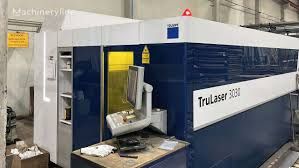Distinguish laser nozzles - Choosing the Right nozzles
Laser nozzles are no longer a strange concept in the manufacturing industry. So, what types of cutting tips are there and which one is suitable for your machine?
What are laser nozzles?
Laser nozzles are specifically designed to control and shape the laser beam as it interacts with the material being processed. Here are its definition, use and application.
Definition
Nozzle is a narrow piece attached to the end of a pipe or tube to direct the stream of liquid, air or gas passing through. Laser nozzles are an important component of laser cutting machines and are installed at the bottom of the laser head. They are responsible for emitting laser power and high-pressure airflow that are used to cut materials.
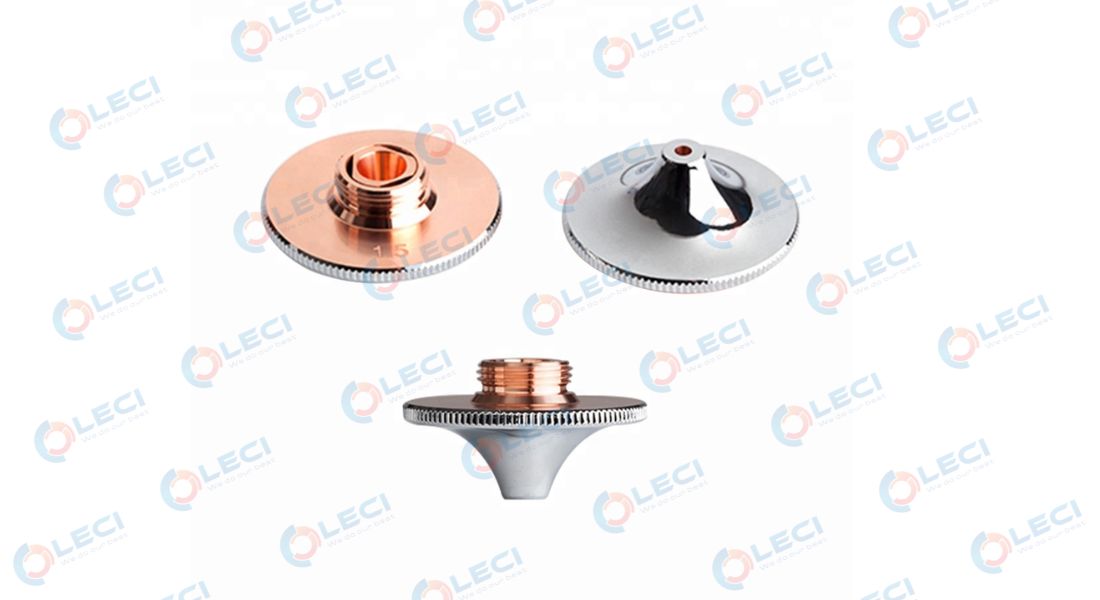
Laser nozzles are widely used in various industries, including medical, jewelry making, engraving, and sculpture
Also, the nozzle is responsible for directing the laser beam and auxiliary gas to the cutting material. And because these nozzles are subject to wear and tear, we need to manufacture them precisely and install them correctly.
Uses
Laser nozzles are an indispensable component within laser cutting and engraving systems. They not only come into direct contact with the product, determining the quality of the cutting and engraving, but also serve several other functions.
Some of the primary functions of these laser nozzles include:
Maintaining stable pressure between workpiece and nozzle: By controlling the configuration within the laser nozzle head, nozzles adjust the direction and pressure of the high-pressure air stream. This helps maintain consistent pressure between the workpiece and the nozzle.
Protecting the lens: Laser nozzles prevent molten workpiece material from splashing back into the laser head, thus safeguarding the internal lens of the laser head.
Ensuring the stability of the height control system: Capacitive signals are transmitted to the height control system, ensuring its smooth and stable operation.
Application
Laser nozzles have diverse applications in various fields and industries. Laser machine nozzles play a crucial role in laser cutting, welding, and marking processes. Here are some of the key applications of this nozzles in different industries:
Mechanical Industry: Laser nozzles are applied to cut and process metal materials, enabling the production of complex and precise components. Various metal materials, including steel, aluminum, copper, titanium, and alloys, can be processed.
Electronics Industry: Nozzles are used to cut and process circuit boards, electronic components, and electronic materials, allowing for the creation of highly precise electronic products.
Medical Industry: fiber nozzle lasers are employed in the manufacturing of medical equipment and medical devices. They can cut and process medical materials such as stainless steel and medical-grade plastics.
Advertising Industry: Advertising materials like banners, acrylic, wood, and plastics are cut using laser nozzles to produce high-quality products with fine details.
Woodworking Industry: Laser nozzles are used to cut and engrave wooden materials, resulting in intricately designed decor, models, and furniture that require high precision.
Automotive Industry: Laser cutting machines find applications in the processing and manufacturing of automotive parts, including metal and plastic components.
Identify types of laser nozzles
There are many ways to identify and classify laser cutting nozzles. However, there are three common ways that are often used: identification by class, by type and by specification (size).
Identify by layer
About the Laser nozzle types, they are classified into two main types: single-layer and double-layer.
Single-layer: Have a simple structure, consisting of a metallic body and a cutting head made of alloy materials. These nozzles are typically used for cutting materials with a thickness of less than 6mm.
Double-layer: Have a more complex structure. They include a metallic body, a cutting head made of alloy materials, and a protective layer. This type of nozzle is used for cutting materials with a greater thickness, typically exceeding 6mm.
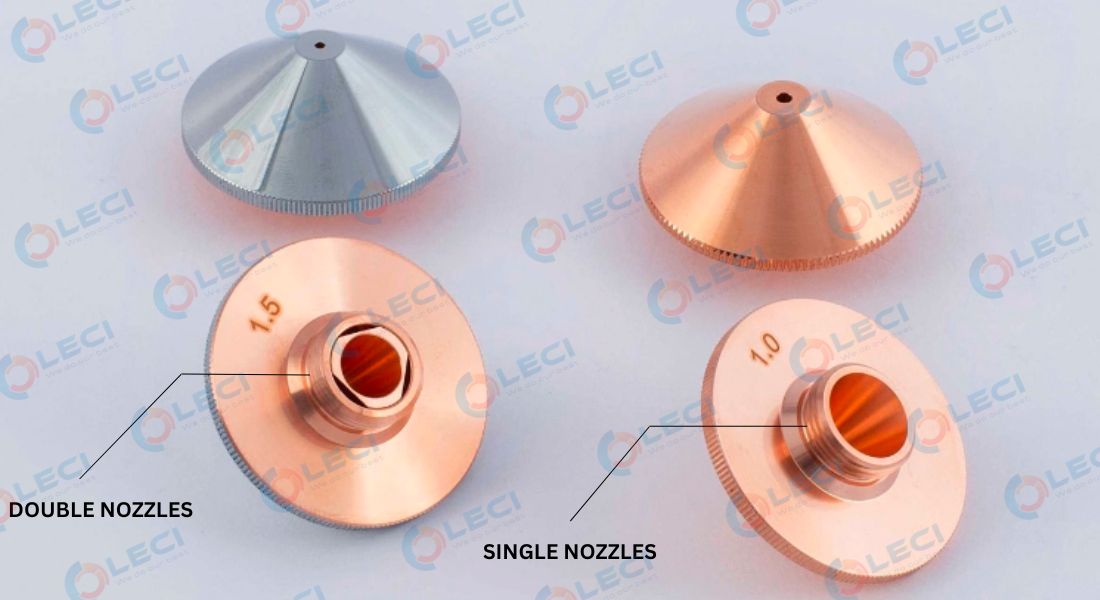
Laser nozzles are classified by class including single-layer and double-layer
Identify by type
There are laser nozzles designed for Raytools, Precitec, WSX,... cutting heads. Here are some types of raytools laser nozzle currently available at LECI:
Raytool Type A Double Laser Nozzle: Some types of laser cutting nozzles include: D0.8; D1.0; D1.2; D1.4; D1.5; D1.6; D1.8; D2.0; D2.5; D3.0; D3.5; D4.0; D4.5; D5.0; D5.5; D6.0
Raytool Type B Double Laser Nozzle: Some types of laser cutting nozzles include: D0.8; D1.0; D1.2; D1.4; D1.5; D1.6; D1.8; D2.0; D2.5; D3.0; D3.5; D4.0; D4.5; D5.0; D5.5; D6.0
Raytool 3D Type G Double Laser Nozzle: Some types of laser cutting nozzles include: D1.0; D1.2; D1.5; D2.0; D2.5; D3.0
Raytool Type F Double Laser Nozzle: Some types of laser cutting nozzles include: D0.8; D1.0; D1.2; D1.5; D2.0; D2.5; D3.0; D3.5; D4.0
Raytool 3D Type G Single Laser Nozzle: Some types of laser cutting nozzles include: S1.0; S1.2; S1.5; S2.0; S2.5; S3.0
Raytool Type A Single Laser Nozzle: Some types of laser cutting nozzles include: S0.8; S1.0; S1.2; S1.4; S1.5; S1.6; S1.8; S2.0; S2.5; S3.0; S3.5; S4.0; S4.5; S5.0; S5.5; S6.0
Raytool Type B Single Laser Nozzle: Some types of laser cutting nozzles include: S0.8; S1.0; S1.2; S1.4; S1.5; S1.6; S1.8; S2.0; S2.5; S3.0; S3.5; S4.0; S4.5; S5.0; S5.5; S6.0
Raytool Type C Single Laser Nozzle: Some types of laser cutting nozzles include: S0.8; S1.0; S1.2; S1.4; S1.5; S1.6; S1.8; S2.0; S2.5; S3.0; S3.5; S4.0; S4.5; S5.0; S5.5; S6.0
Raytool Type D Single Laser Nozzle: Some types of laser cutting nozzles include: D1.0; D1.2; D1.4; D1.5; D2.0; D2.5; D3.0; D3.5; D4.0
Raytool Type F Single Laser Nozzle: Some types of laser cutting nozzles include: S0.8; S1.0; S1.2; S1.4; S1.5; S1.6; S1.8; S2.0; S2.5; S3.0; S3.5; S4.0
Raytools laser nozzle type E Single, Double Laser Nozzle: Some types of laser cutting nozzles include: 35.5x27.7 (diameter x height); 23x15; 10.7 x 22.2
Recognition by specification - Size
The third laser nozzle types are classified by specification. Before making a purchase, you need to note that each type will have its own specifications, such as diameter, height, thread, and caliber, which are suitable for different laser cutting machine heads.
For each type of machine and different machine models or cutting heads, you will need to use different laser nozzles. Therefore, when purchasing laser nozzles, it's essential to understand the model you are using to find the appropriate cutting head. You can seek a reputable provider with years of experience in the field to receive detailed guidance on the nozzle size and specifications that are suitable for your specific machine model.
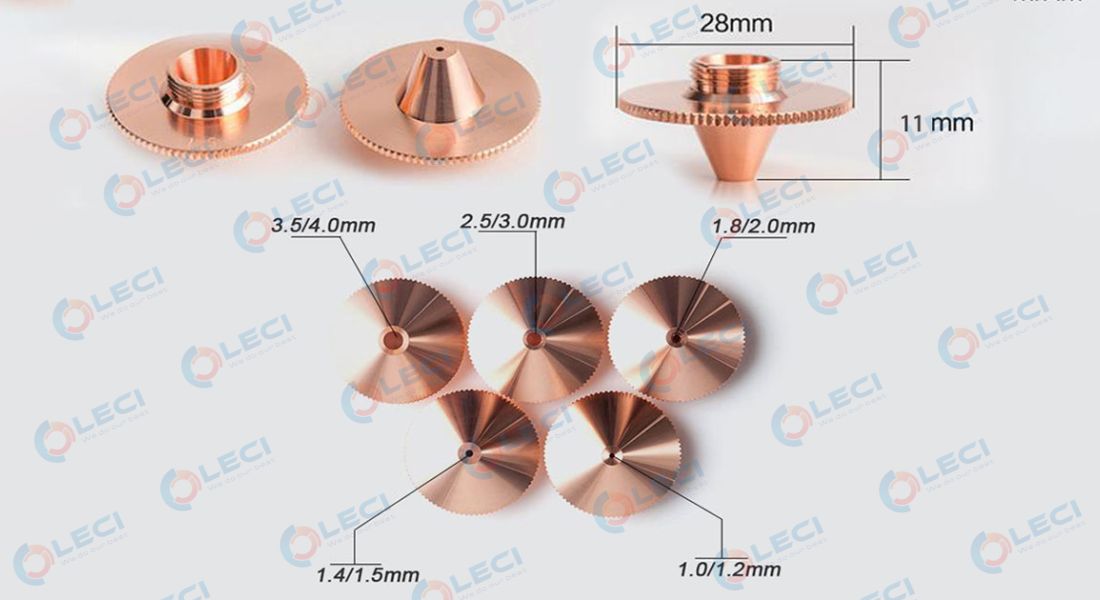
Laser nozzles come in a wide range of sizes
Each type of cutting head currently available on LECI's website comes with its own set of technical specifications. Customers can refer to these specifications to choose the cutting head that best suits their business needs.
Choose the appropriate laser nozzles
You can consider these two main factors to choose the laser nozzles which suit your machine most.
Size
Material Thickness: Fiber laser nozzle has various sizes, and each size is optimized for cutting specific material thicknesses. For thinner materials, you might use a smaller nozzle, while thicker ones require larger nozzles.
Cutting Precision: If your application demands high cutting precision, you'll need to choose a nozzle that aligns with the level of detail you want to achieve.
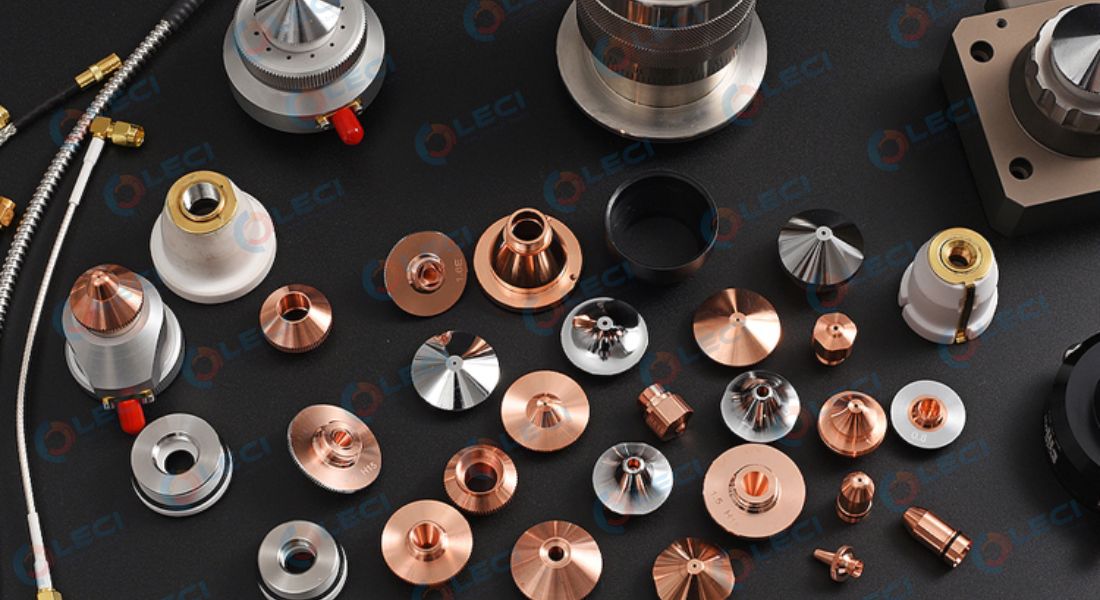
Material Thickness and Cutting Precision can affect a lot to the choice of laser nozzles
Smaller nozzles are better suited for intricate designs and fine details, while larger ones are ideal for thicker materials.
Capacity
Laser Power: Often expressed in W or KW, determines the laser's cutting ability. Nozzles should match the laser's power output. High-power lasers require nozzles designed to withstand the heat and intensity of the beam, while lower-power ones may use smaller, less robust nozzles.
Cutting Speed: High-capacity nozzles can handle faster cutting speeds, which is essential for productivity in industrial settings and vice versa.
Material Compatibility: Some materials emit excess smoke or gases during cutting can affect the nozzle's performance. Nozzles with specific designs or hole sizes are available for different materials to optimize cutting results.
Note when using laser nozzles
To ensure the efficiency and quality of laser nozzles, the operator's skills and attention to detail are paramount.
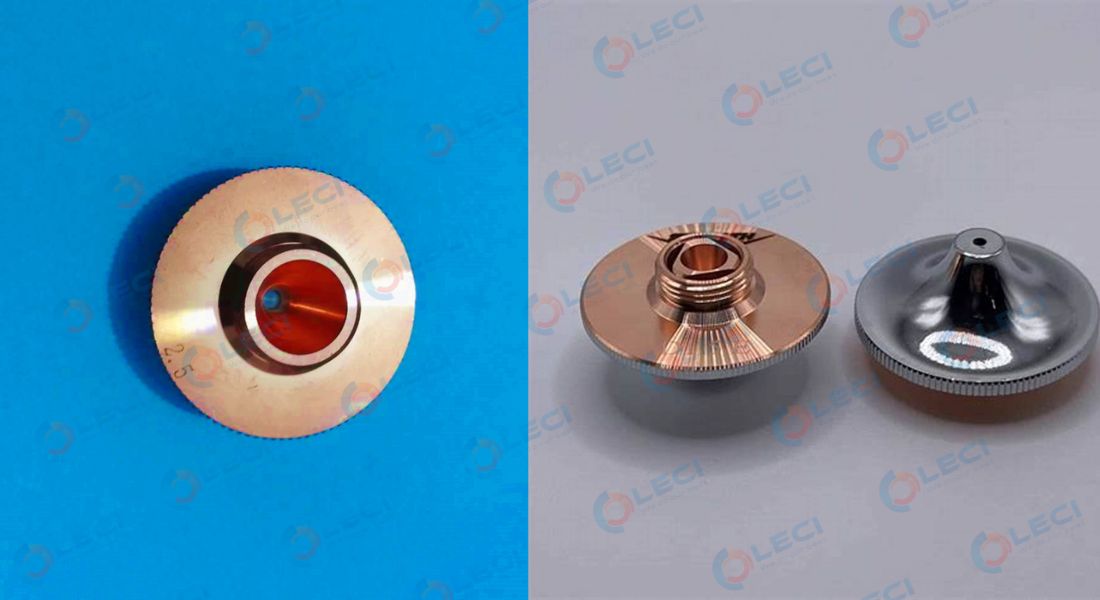
The lifespan of a laser nozzles depend on the operator
Therefore, several key considerations should be taken into account for the effective use of laser cutting equipment.
Nozzle Selection for Smooth Cuts: Achieving a smooth cut surface depends on the thickness of the material. For materials under 3mm thick, a nozzle with a diameter of φ1.5mm is typically used. Materials thicker than 3mm benefit from a φ2mm nozzle, while materials 10mm and above require a φ2.5mm nozzle.
Proper Nozzle Installation: During the installation of the cutting nozzle, it's essential to tighten it securely from the outside in. This ensures stable and precise nozzle positioning.
Accurate and Careful Installation: Careful and precise installation is crucial to prevent damage or distortion and have consistent cutting quality.
Regular Cleaning: Routine cleaning of the nozzle to remove any adhered dirt or debris is necessary.
Nozzle Replacement: If the fiber laser nozzle's output hole becomes deformed or loses its circular shape, it's time for a replacement. Choosing reputable suppliers like LECI can provide a wide range of reliable nozzle options.
Nozzle Lifespan Factors: The lifespan of cutting nozzles is influenced by several factors, including the material used for manufacturing, laser power output, the capabilities of the laser cutting head, and the thickness of the processed material. Additionally, operator handling plays a significant role. Incorrect usage can lead to rapid nozzle damage. For example, setting the ignition height too low may cause molten metal to splash onto the nozzle, resulting in damage.
LECI - Supplier of a variety of laser nozzles
At LECI, we take pride in our extensive experience, spanning over ten years in the industry. Committed to progress, we continually strive for enhancement to deliver the utmost satisfaction to our valued customers. Within our domain, we specialize in providing a diverse range of authentic, imported laser nozzles, ensuring both quality and cost-effectiveness.
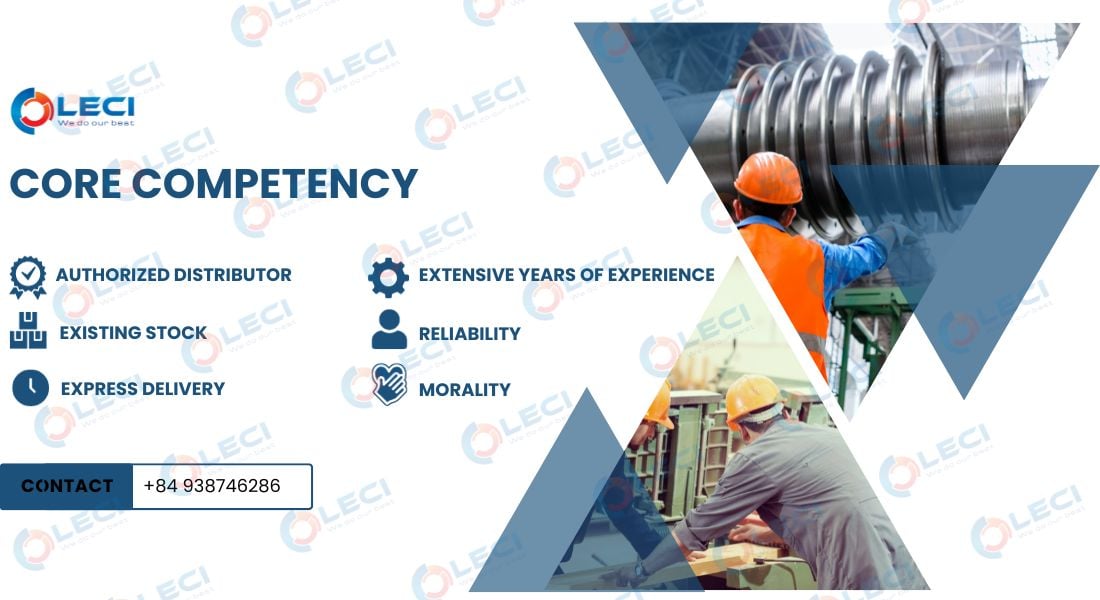
LECI - Supplier of a variety of laser nozzles
When you choose LECI, we are confident that you will experience exceptional service. Alongside our skilled technical team, boasting rich expertise in the field, our dedicated customer support professionals are ready to assist you 24/7. Moreover, you can conveniently replace components whenever necessary, as LECI maintains a readily available stock to serve your needs.
Contact us:
Address: Room 1901, Saigon Trade Center Tower, 37 Ton Duc Thang, Ben Nghe Ward, District 1, Ho Chi Minh City, Viet Nam.
Phone: 02822202988
Hotline: (+84) 901441689 (Whatsapp)
Website: www.lecilaser.com



